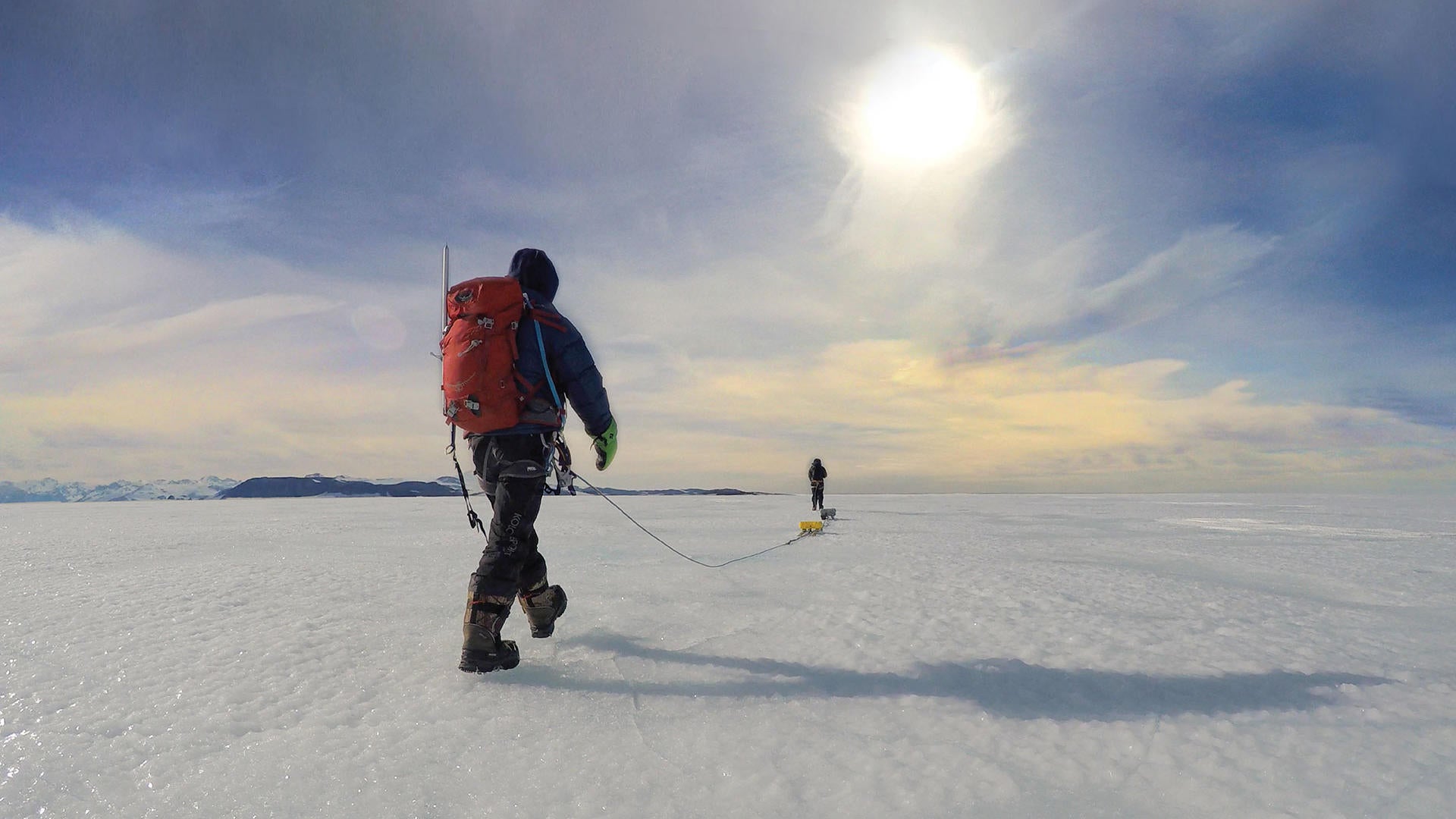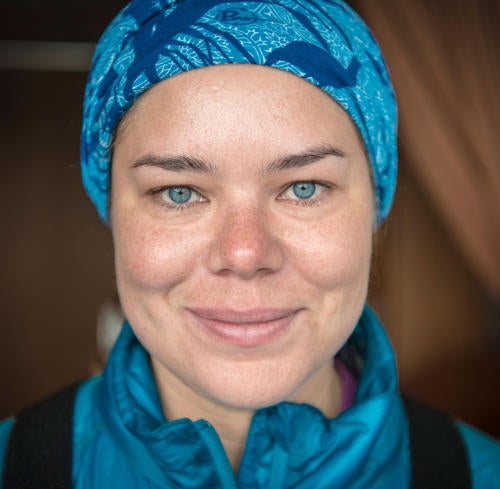
Trekking the ends of the Earth to set a timetable for our climate emergency
For eight days straight, Water Institute member and researcher Christine Dow and her team dragged a sled-mounted radar system roughly 85 kilometres across the frozen Antarctic. The hard-earned data they collected has Dow convinced the Antarctic Ice Sheet is destabilizing faster than anyone thought.
“It’s scary,” says the Scotland-born Canada Research Chair in Glacier Hydrology and Ice Dynamics at the University of Waterloo. “The West Antarctic was predicted to take 1,000 years to collapse. Now, we’re talking a few hundred years.”
Understanding the danger posed by melting polar regions takes a combination of physics knowledge, computational chops and a heavy dose of imagination. Dow does the work not everyone is prepared to do. She travels to the coldest places on earth collecting raw data and modelling that information to understand how the subglacial hydrological and ice-ocean systems evolve as a result of climate change.
The familiar shape of the Antarctic we’ve seen on maps since childhood betrays the landmass beneath. “The landmass is in the middle of the Antarctic. Massive ice shelves cling to its edge holding back the ice on land. If those shelves go, that land ice accelerates into the ocean,” Dow says.
Her radar sled uncovers information deep below the ice to paint a picture of how warming ocean water is eroding that anchor ice and cleaving ice shelves at an accelerated rate, which significantly raises sea levels.

Professor, Faculty of Environment
Canada Research Chair in Glacier Hydrology and Ice Dynamics
Water Institute
“Because we’ve only recently had the computing power to run these kinds of models, and we’re still making these new discoveries about ice shelves, the more we find out, the more unstable the whole system seems to be,” Dow says. “Is this going to collapse in the next 200 years? It might.”
This threat of collapse has attracted climate researchers from around the world to the West Antarctic Ice Sheet. The area is experiencing an uncanny confluence of climate-related changes. “The data we’re gathering isn’t about whether it’s collapsing, it’s how fast,” Dow adds.
In 2018, the world jolted awake to the dangers of climate change when the UN Intergovernmental Panel on Climate Change (IPCC) released its report giving us a 12-year timetable to avoid irreversible climate impacts.
That timetable might be optimistic.
“We’re gaining new information all the time so the IPCC estimates are likely to get even more serious over time both due to the reducing timetable and our increased knowledge,” she says. “The worst case we’re modelling is 12.5 metres sea level rise globally. That’s total devastation of the planet.”
Dow is a scientist first and foremost. She joined the University of Waterloo from a previous position with NASA, but knowing what she knows has left her no choice but to be an advocate as well.
“Imagine having to relocate every person living in a coastal city in 100 years,” she explains. “Sea-level rise means salt water infiltrating our ground water. It means climate refugees.”
Dow stresses that all climate scientists need to do a better job communicating the danger. We all have a role in our current climate emergency. For Dow, it’s using her gifts as a scientist and her courage to spend months in the most inhospitable environments to get the raw information we need to accurately determine how fast we need to act.
“I am hesitant to say it’s this or that many years, but if it’s not already too late it will be soon if we don’t act. Regardless, we can be certain though that everything is going to change.”
By
Sam
Toman
Faculty
of
Environment
Originally
published
on
Waterloo
Stories.